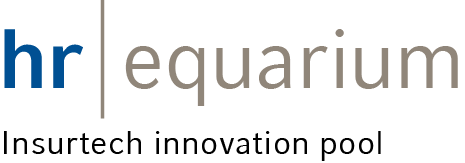Smart insurance for smart homes: Predict, protect – and connect
Insurtech devices have the potential to improve loss ratios and at the same time enhance the customer experience, says Craig Foster, CEO of Ondo plc.
Collaboration on loss prediction and prevention is usually associated with forward-thinking industrial businesses and their insurance-provider partners. But growing acceptance of smart technology among homeowners means that more personal insurers are now exploring the potential benefits of providing home maintenance and security devices alongside financial protection to policyholders.
As well as internet-connected smoke detectors and security surveillance systems, homeowners can now fit smart devices that sense water leaks and electrical problems, for example. Other emerging home risk management technology includes sensors that track weather conditions or devices that indicate whether an oven hob is switched on or a door has been left unlocked.
The offer of smart technology as part of an insurance package is a no-brainer for insurance companies, argues Craig Foster CEO of Ondo Insurtech PLC. He says that insurers stand to both reduce claims costs and improve loss ratios by predicting and preventing accidents: “The motivation for insurers is that the cost of deploying this service is less than the amount of claims saved as a result.”

“In addition, carriers have seen loyalty and retention improve, as customers really like and appreciate the value-added service that comes with a smart home device. Also, some insurers have seen up to a 50 percent increase in new business as a result of using the smart home technology and service as a point of differentiation against the competition,” he says.
Foster’s comment bears out the findings of the recent “Predictions 2023: Insurance” report (Ellen Carney, Indranil Bandyopadhyay) from market research firm Forrester, which predicts that more insurers will introduce value-added services aimed at predicting and preventing loss in 2023. In the article “Many Insurtechs Exit the Marketplace, and Other 2023 Predictions From Forrester” in the report, Chad Hemenway highlights the assertion that this extension of an insurer’s brand to helping customers prevent losses could reduce the disappointment factor during the claims process.
Ondo Insurtech’s Leakbot product uses technology to detect water leaks in homes. The device, now offered by a number of big insurance companies in Europe and the US, can be self-installed by homeowners and is used in conjunction with an app. It has been shown to reduce water damage claims by as much as 70 percent by catching leaks very early and sending plumbers to the home to fix the problem.
Insurtechs deliver
Insurtechs can do a lot to help insurers deliver value-added loss-prevention services to policyholders, Foster says: “Insurtechs are playing a key role by partnering with insurance carriers to solve some big industry problems, rather than trying to compete with and disrupt the incumbent insurers.”
Many insurers have responded well by experimenting with and testing new ideas and business models, he adds: “But breakthrough success is dependent on both the forward-thinking and agility of big insurers, combined with insurtech solutions that genuinely deliver an ROI and are capable of scaling economically.”
Make a connection
Ondo’s primary focus with Leakbot is providing a scalable solution to home insurers’ number one problem – water damage claims. But the arrangement is also a good jumping-off platform for insurers looking to engage more closely with their customers.
As well as making a home insurance product immediately more tangible, crucially, insurers have also placed an app on their customers’ phones: “This creates other opportunities to improve the household risk of that customer, by offering other products or advice to the homeowner,” Foster explains.
“We can already see the increasing use of IoT sensors with black-box telemetry and safety features in car insurance.“
The connection with the client can help gather additional data that shows the home is an ever-better risk to insure, Foster points out: “You can ask customers if they have taken certain precautions, for example, and that could enable you to give the customer a better risk rating at renewal.”
Foster believes that insurtechs, especially those in the Internet of Things (IoT) space, will grow their involvement in loss prevention across property-casualty insurance. “We can already see the increasing use of IoT sensors with black-box telemetry and safety features in car insurance, especially in EVs and autonomous vehicles.”
However, taking customer interaction to the next level in such cases puts data collection in the spotlight, says Foster. With car insurance in particular, the car itself is harvesting a lot of information about its owner: “This raises some interesting questions for insurers about who owns these new sources of data and will it create a structural shift in insurance from a strategic point of view?”
User questions
Answered questions
Unanswered questions
Views: 5122
Downloads: 0
| 0 % | |
| 0 % | |
| 0 % | |
| 0 % | |
| 0 % |
Page is favored by 0 user.
Contact inquiries: 0


